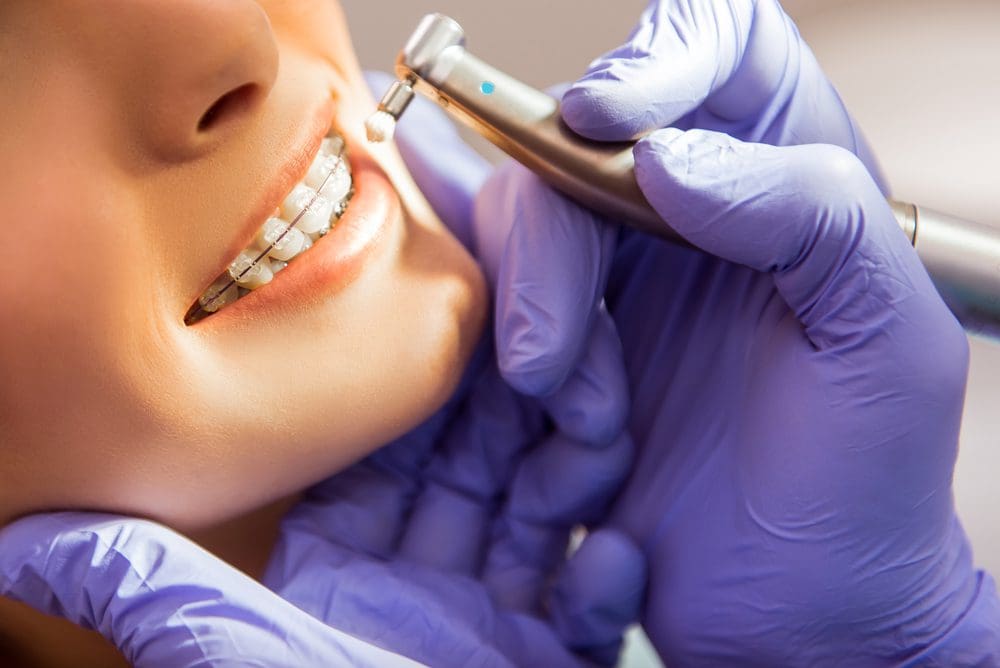Why Cumming Invisalign is the Perfect Option for a Discreet Orthodontic Option
Why Cumming Invisalign is the Perfect Option for a Discreet Orthodontic Option
Blog Article
Comprehensive Overview to Orthodontics Procedures for Correcting Oral Misalignments
Comprehending the details of each procedure, including their systems, benefits, and prospective downsides, is important in making informed decisions about one's orthodontic therapy. As we browse with the extensive overview to orthodontic procedures for correcting dental imbalances, the elaborate details of each technique will certainly unfold, dropping light on the path towards a harmonious and practical dental alignment.
Orthodontic Procedures Review

Along with clear aligners and standard braces, orthodontists might likewise recommend various other interventions like headwear, palatal expanders, or retainers to attend to particular alignment concerns (cumming invisalign). These treatments are tailored to each person's one-of-a-kind requirements and may entail a mix of therapies to attain the preferred outcomes. Routine changes and surveillance are essential components of orthodontic treatment to make sure development gets on track and to make any kind of essential adjustments in the process. By undergoing orthodontic treatments, clients can not just accomplish a straighter grin but also boost their overall oral health and wellness and function.
Standard Braces: How They Work
When considering orthodontic treatments for oral misalignments, traditional dental braces stick out as a reliable technique for dealing with teeth positioning. Traditional braces contain braces, cables, and bands that work with each other to use constant pressure on the teeth, progressively relocating them into the desired placement. The braces are connected to the teeth utilizing an unique adhesive, and the cords are threaded via the brackets. By readjusting the stress of the wires, orthodontists can manage the direction and force put on each tooth, directing them into appropriate placement with time.
As pressure is used to the teeth with the dental braces, the bone surrounding the teeth is improved to sustain the new tooth settings. Individuals will require regular adjustments at the orthodontist's workplace to make certain the braces proceed to apply the correct stress for effective teeth movement.
Unseen Aligners: Pros and Disadvantages
These clear, custom-made trays are practically invisible when worn, making them an attractive choice for individuals looking for a much more visually pleasing orthodontic treatment. People can eliminate the aligners before consuming or cleaning their teeth, decreasing the risk of food obtaining stuck in the home appliance and simplifying the cleansing process.

Surgical Orthodontic Options
Surgical interventions in orthodontics existing sensible options for attending to intricate oral misalignments that may pop over here not be successfully settled through traditional orthodontic therapies. While typical braces and undetectable aligners can fix lots of orthodontic concerns, certain situations need medical treatment to attain optimum outcomes. Surgical orthodontic alternatives are generally recommended for severe malocclusions, significant jaw discrepancies, and cases where the underlying bone framework requires alteration to attain appropriate positioning.
One typical medical orthodontic procedure is orthognathic surgery, which involves repositioning the jaws to correct useful concerns such as trouble eating or talking. This surgical procedure is often performed in collaboration with an orthodontist who helps align the teeth before and after the treatment. Surgical orthodontics might likewise include procedures to expose impacted teeth, get rid of excess periodontal tissue, or improve the jawbone to develop an extra unified face account.
Prior to considering surgical orthodontic choices, patients go through a detailed examination to identify the necessity and prospective benefits of such treatments. invisalign. While surgery might seem overwhelming, it can substantially improve both the feature and aesthetic appeals of the smile in click for more info cases where traditional orthodontic treatments fall short
Retainers and Post-Treatment Treatment

Post-treatment care includes following the orthodontist's guidelines vigilantly. This might consist of appropriate dental hygiene practices, attending follow-up consultations, and using the retainers as prescribed. Failing to conform with post-treatment care guidelines can lead to relapse, where the teeth gradually return towards their initial settings. Consistent retainer wear, great dental hygiene, and normal oral examinations are vital for maintaining the outcomes attained via orthodontic surgical treatment and making certain the long-term stability of the remedied oral alignment.
Conclusion
Finally, orthodontic treatments use numerous options for remedying dental misalignments. Typical dental braces use steel braces and cables to shift teeth right into correct placement. Unseen aligners give an even more discreet alternative yet might not be appropriate for all situations. Surgical orthodontic options are available for extra extreme misalignments. Retainers are typically used post-treatment to maintain the brand-new placement. Generally, orthodontic procedures can effectively improve oral health and wellness and aesthetic appearance.
As we browse with the extensive overview to orthodontic treatments for remedying dental imbalances, the elaborate information of each technique will unravel, dropping light on the course towards a unified and practical dental alignment. - aligners
One of the most typical orthodontic treatments is the usage of braces, which are composed of metal braces and wires that use gentle stress to gradually change teeth into the preferred position.When considering orthodontic therapies for dental imbalances, standard braces stand out as a reliable approach for dealing with teeth placing. Additionally, unseen aligners might not be suitable for complex orthodontic problems that require even more significant teeth activity, as they are normally suggested for moderate to modest instances. Retainers are customized orthodontic tools designed to hold teeth in their fixed placements after the conclusion of orthodontic therapy.
Report this page